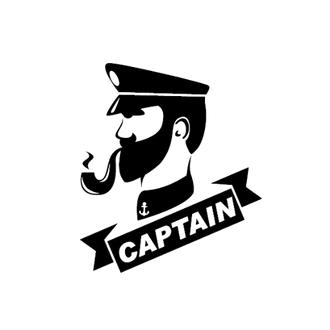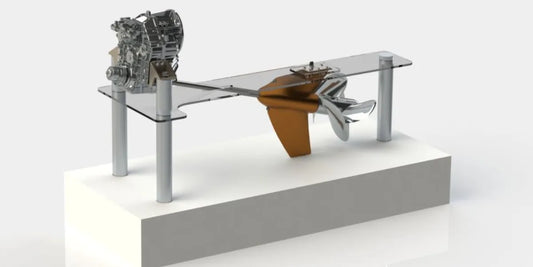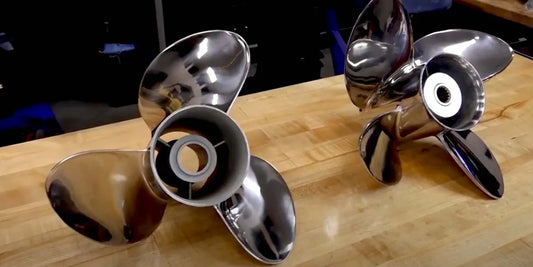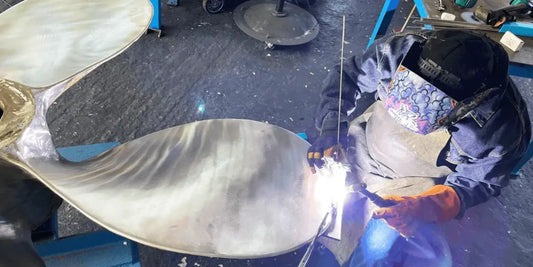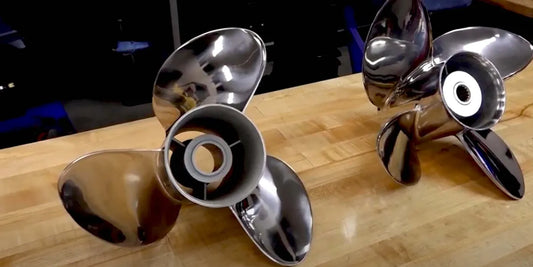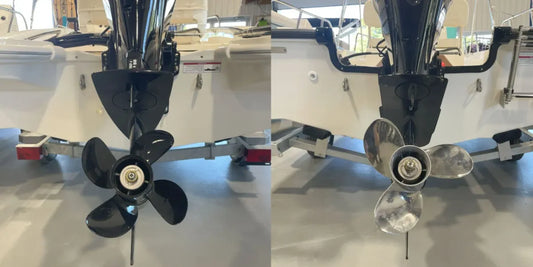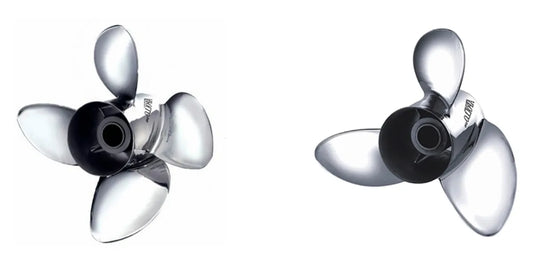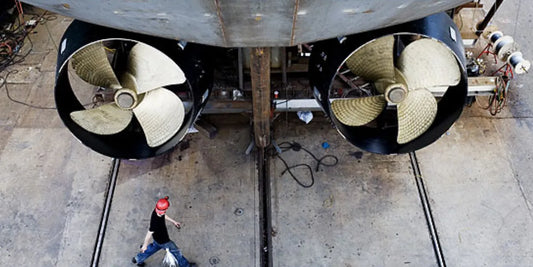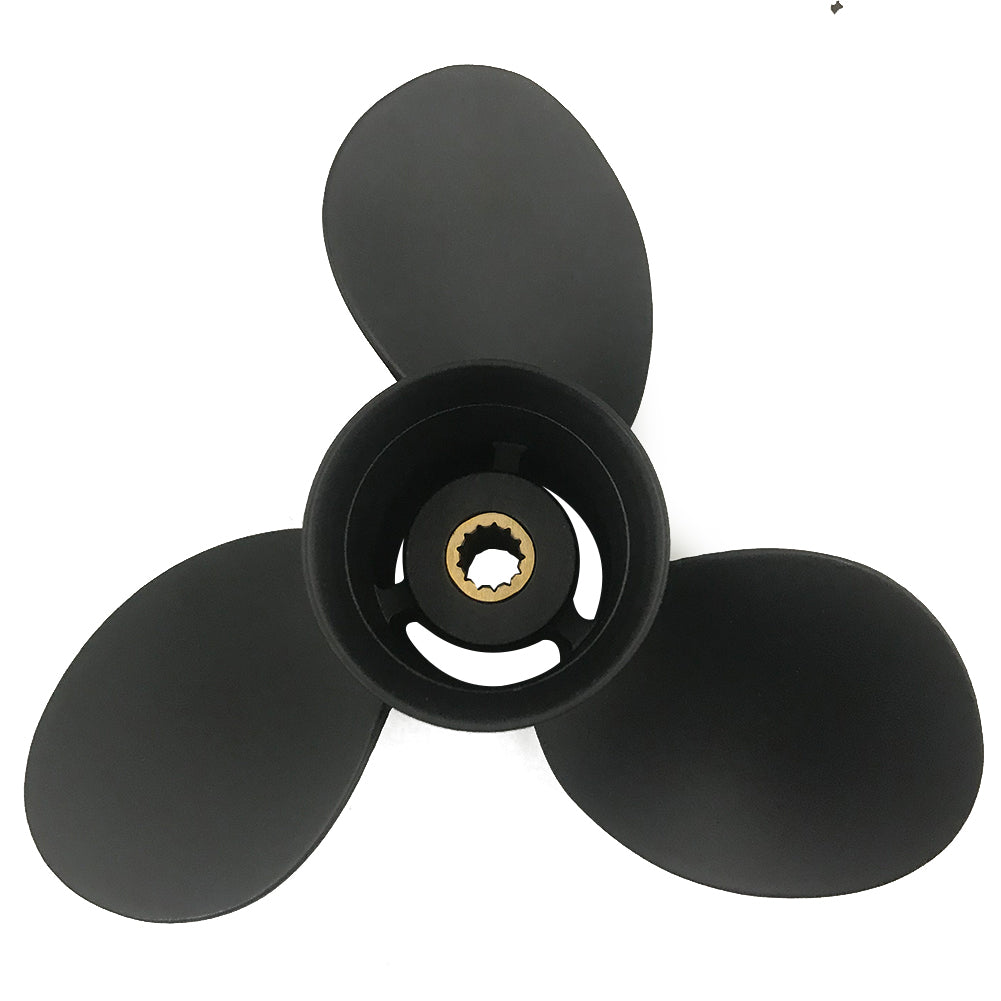A spun propeller is one of those issues every boat owner likes to avoid, and beginners in particular might be overwhelmed at the thought of fixing it. Nonetheless, a straightforward path through the bots will make it less complicated and make the effort worthwhile. This article aims to educate you on the working methods of assessment and repair for a spun prop. With this knowledge, you will be able to restore your boat-side operation to peak efficiency. Whether for the newbie in boating or for a one-time refresher course in maintenance, this article furnishes you with real tips and insights every step of the way. By the time you finish this guide, you will be confident in performing the repair and ensuring that your next outing is a smooth trip.
Understanding the Mechanics of a Spun Prop

What is a Spun Prop and How Does It Work?
A typical spun prop occurs when the inner rubber hub of a propeller fails to maintain its grip on the outer propeller housing. This component serves to safeguard the propeller and drivetrain, as it absorbs shock when the blades hit an object, such as debris or an underwater obstacle. Over time, wear and tear, sudden shocks, or indiscriminate use may all lead to deterioration of the rubber hub and eventual slippage.
You tend to see a massive increase in RPM without speed when a prop does spin but cannot quite push the boat on the water--that's one distinct manifestation of a spun prop. This type of issue can hinder performance and acceleration, and compromise fuel efficiency. It's essential to understand how a spun prop works to aid in diagnosis and repair, which will restore the propeller's prosperity and keep your vessel sailing smoothly.
Common Signs That Indicate You May Have a Spun Prop
Sudden Loss of Speed with High RPM: Perhaps one of the most notable signs is the increase in engine RPM, without a corresponding increase in vessel speed. This could mean the inner hub of the propeller has lost its grip and cannot transfer engine power effectively.
Difficulty in Getting on Plane: A spun prop usually reduces thrust, hence making it hard for your boat to get on plane. On such occasions, you tend to observe sluggish acceleration with the throttle fully in the forward position.
Vibrations or Strange Noises: Banging from the boat, vibrations, and strange noises heard during operations may indicate a spun prop. Basically, the misaligned hub causes the propeller to have an uneven pitch.
Thrust Output Not Constant: A spun prop may give irregular thrust outputs, as it will surge your boat and then slow it down intermittently. This alternating thrust results from the compromised grip of the propeller's hub.
Visible Damage to the Propeller and Hub: Such damage to propeller hubs or rubber bushings will include dimensional cracking, burning, or warping. These phenomena would suggest a spoken prop that needs to be repaired or replaced to prevent further damage.
Fuel Inefficient: A classic symptom of the spun prop is significant fuel inefficiency, as fuel is wasted due to the wastefulness of lost energy. Further consequent operational costs would arise.
Early recognition of these signs can lead to the immediate repair or replacement of the propeller and, in turn, further promote efficiency while minimizing interruptions in boating events.
What Powers the Propellers through the Prop Hub?
Suppose anything can be considered an individualized engine component. In that case, the very term 'these blades' will create a misconception, at least from the present understanding of a propeller —the blades of a propeller have to influence the inner workings of the central hub. This core unit must ensure the secure attachment of the propeller to the driveshaft, thereby transferring the rotational energy of the engine into thrust and forward movement of the craft. Hubs are typically designed to withstand a high degree of stress and therefore require durability and stability under high-performance conditions.
One of the principal features of modern-day propellers is to absorb shock and vibration, that is, the shock occurring when shifts put their forces or a sudden impact of water debris hits the blade. Such sudden shocks come extinct in rubber or flexible hubs, thereby preserving the propeller and the engine. Furthermore, most modern hubs are also equipped with fail-safe features, such as breakaway designs, which reduce the degree of damage to the drivetrain by allowing the hub to 'give way' in extreme impact situations.
Each boat has its unique requirements for the model selected for use. By keeping the hub intact, propulsion efficiency can be altered, with reduced component wear, thereby improving the total life of the marine system.
Identifying the Causes of a Spun Prop

Common Causes That Lead to a Spun Prop
A spun propeller can significantly hinder the boat's performance, and understanding its causes helps prevent future occurrences. One of the prevalent reasons is wear and tear, especially in older hubs, where the inner rubber bushing gets worn out through use. A sudden acceleration or impact with an underwater obstruction puts a tremendous strain on the prop hub and may cause it to spin out of coordination with the shaft. Further causes may be improper installation or selecting a prop/pitch combination that is incompatible with the power and specifications of your engine.
Furthermore, overheating can be a contributing factor when the rubber material of the hub becomes heated due to frequent friction or heavy torque, and thus degrades prematurely. Mechanical fatigue that occurs due to prolonged operation under heavy loads may further enhance wear, especially in a refined or high-power-oriented craft. Regular inspections and maintenance, accompanied by a boat setup tailored to its intended use, should minimize the chances of a spun prop while retaining its performance and durability.
Installation Mistakes Detrimental to the Propeller Hub
Improper fitting of a propeller hub can severely compromise its functionality and service life. In cases where the mounting is not thorough or the fitting is done improperly, uneven stress distribution occurs during operation, causing vibrations. This can be detrimental to the efficiency of the propelling process or damage the drivetrain. For instance, the imbalanced hubs could cause extra stress on the propeller shaft, which can lead to increased wear.
As one of the major problems associated with improper installation, the hub experiences an early failure. Due to the uneven transmission of torque, the rubber material of the hub, which is supposed to provide shock absorption and effectively protect other components, can wear away rapidly or degrade when exposed to excessive heat. Furthermore, if the fastenings are not tightened correctly, the propeller will wobble, thereby affecting the speed and fuel consumption of the boat.
The right installation will be achieved if the click torque specifications are followed, the propeller shaft is cleaned before mounting, and the hub is inspected for any signs of wear before installation. These precautions will not only enhance the performance of your propeller hub but also increase its longevity, minimizing costly repair or replacement options.
Environmental Factors That Can Give Rise to Spinning Problems
Environmental conditions will contribute mainly to the performance and longevity of a propeller hub. Debris in the water, such as weeds, fishing lines, or driftwood, can often pose a major hindrance as it can get wrapped around the prop, causing imbalance and even spinning issues. Besides, the more common propeller strike could also be hitting an object, in case shallower or murkier waters are being navigated, like a rock or a sandbar that initiates further wear or damage affecting the integrity of the hub.
Then come the corrosive environments. Boats that are primarily used in seawater get corroded, along with the corrosion, causing the connection between the propeller and its hub to crumble over a considerable period. Significant temperature fluctuations then affect the materials of which the hub is made, at least in the case of metals, causing expansion, contraction, or some sort of fatigue. This becomes most apparent when cruising in freezing conditions and in prolonged exposure to intense heat.
Again, water turbulence and strong currents worsen spinning problems. Running in high-flow water conditions or in the midst of severe weather puts additional stress on the propeller system, thereby increasing the chances of slippage or misalignment. Acknowledging these environment-related issues and effectively addressing them within maintenance practices would prevent boaters from experiencing much trouble related to spinning issues in the propeller hub and ensure its smooth operation.
Effective Methods to Fix a Spun Prop

Step-by-Step Guide on How to Fix a Spun Prop
Identify the Issue: First, address the issue; it should be a spun proposition. Signs such as unusual slipping during acceleration, inability to reach top speed, or a noticeable decrease in performance would all be indications. Inspect the propeller hub for physical damage and check for worn-out rubber in the hub area.
Remove the Propeller: Having safely detached the propeller from the prop shaft, use the appropriate socket and wrench tool to unscrew the prop nut, being careful not to disturb other parts. Store the washer and nut in a safe location until assembly.
Examine the Propeller Hub: Give the hub a thorough inspection to check for any damage. Quite often, from wear, tear, or overheating, the rubber insert inside the hub of a spun prop loses its grip. Check for cracks or severe distortions in the adjacent materials.
Replace the Hub Insert: If the hub insert is damaged beyond repair, it needs to be replaced. One can take the propeller to a professional repair shop to have the insert replaced, or, if one feels confident in performing the re-hubbing, a prop repair kit may be purchased and used. This procedure involves removing damaged rubber and installing a new fit to bring the prop back into working condition.
Reinstall the Propeller: The propeller is then installed, with the nut tightened enough to hold the propeller in place but not so tight that the parts are forced against each other. If you have the proper torque wrench, apply the torque recommended by the manufacturer.
Test Proper Operation: Start the engine and test the boat in the water, ensuring it operates smoothly with the propeller. Look out for smooth acceleration, proper speed, and no slipping. Adjust it if it still does otherwise.
Prevent Future Issues: Regular checks of the propeller, hub, and engine are necessary to avoid any future problems. The propeller shaft should be greased periodically, and engine strain should not exceed the maximum level. Operating continually within the set performance limits for your boat will also help.
This way, any spun prop fixes can be adequately addressed while also ensuring the boat reaches its optimal state of operation. Constant inspection and maintenance will go a long way in maintaining the components, ensuring they last long and give you smooth operations for years.
Tools You Will Need to Fix a Spun Propeller
The right tools will ensure that the spun propeller is fixed efficiently, and the boat is restored to its full working potential. Here is a brief rundown of the tools and materials needed for this repair:
Propeller Wrench: Specially designed to safely and effectively remove the propeller nut without damaging other parts around it.
Replacement Hub Kit: This typically consists of a new rubber hub and other mounting hardware. Verify that it is compatible with your propeller model.
Lubricant: Apply a high-quality, marine-grade grease to ease installation and prevent corrosion.
Rubber Mallet: To actually strike the cheap-new-hub-into-the-propeller setup down softly.
Torque Wrench: The wrench, upon which the prop nut is tightened according to the manufacturer's torque spec, ensures safe operation.
Screwdrivers (Flathead and Phillips): If any securing clips or brackets have to be removed in the process, you'll need these.
Propeller Puller (Optional): For extra-stubborn or really tight propellers, the prop puller will give you the leverage you need to get it out without damaging anything.
Cleaning Supplies (Rags and Solvent): Clean off old grease, debris, or damaged material with rags and solvent from both the shaft and the prop assembly preceding installation.
Having these tools ready and set up will make it easier to perform the repairs, reduce downtime, and ensure the job is done correctly. Always follow all special instructions for tools and repair methods that are contained in any boat manufacturer’s manual.
When to Replace Versus Repair a Spun Prop Hub
Whether to replace or repair any kind of spun prop hub comes down to the severity of damage and the general condition of the propeller itself. If the only spin damage occurs to the internal rubber bushing, a spun prop hub usually can be repaired. Generally, repair is cheaper and consists of re-pressing or replacing damaged hub parts, so that they may perform again without replacing the entire prop.
In the process of considering changes, replacement would be the scenario offered in case of severe damage, such as cracking, heavy wear on the propellers themselves, and possibly signs of compromised structural integrity. Apart from this, with the improvement of technology in propeller design, one might be tempted to consider replacement in the hopes of upgrading performance. Upgrading to modern propeller types with improved durability and efficiency will result in an increase in overall speed, fuel consumption, and handling of your boat.
Industry data recently found that frequent inspections and maintenance of propeller hubs can extend their life by addressing problems early. A few boaters opt for the next replacement when performance problems persist after several repairs, thereby ensuring trouble-free operation even in rough conditions. Finally, this decision would weigh the repair costs and expected maintenance against the performance that suits your boating requirements.
Preventive Measures for Propeller Maintenance

Preventing a Spun Prop Occurs by Routine Checks
Keeping a propeller in top condition by performing routine maintenance and inspection is paramount to prevention. Visual inspection should include checking for dents, cracks, or bending in the propeller, all of which compromise efficiency and potentially cause further problems. Regular inspection of the prop hub for wear or slippage is also essential, as this is generally the cause of a spun prop.
Ensure that the nut holding the prop is tightened adequately to the proper torque. An inadequately tightened nut will increase alignment difficulties or cause damage. It is also good practice to apply grease to the prop shaft from time to time to prevent corrosion, particularly in saltwater conditions. Don't forget to keep an eye on the vibration when the propeller is up and running. Excessive vibration is likely a sign that the prop alignment or something about the hub requires immediate attention.
The implementation of these checks in the regular maintenance schedule decreases the likelihood of a spun prop, extends the equipment's longevity, and provides the performance required by the boat.
Best Practices in Outboard Propeller Maintenance
Constant and thorough care is required to prepare an outboard propeller for best performance and longevity. After every use, inspect your propeller for any signs of wear, cracks, or damage. Even minor dents might hinder water flow, affecting efficiency. Keep cleaning it regularly, at least with fresh water to avoid salt, debris, or algae build-up, especially if you use it in saltwater conditions.
Another critical aspect of propeller care is maintaining correct torque on the prop nut. The under-torqued and over-torqued nut will cause severe damage over time. Follow the torque recommended by the manufacturers and check the cotter pin to ensure it is in good condition. Occasionally, removing the prop allows checking the area around the shaft for fishing lines or any other debris; should such be neglected, they could potentially cause damage.
Lubrication will therefore help protect prop shafts against corrosion. Apply marine-type grease to the shaft and reapply periodically as part of a corrosion prevention routine, also maintaining good alignment. If you want to take an extra precaution, install a prop protector or a similar guard to absorb impact damage from submerged objects.
Additionally, pitch and diameter specifications should be reviewed periodically, especially if your boating activities or conditions have changed. Specifications matched to ensure optimum performance and efficiency, save on fuel consumption, and reduce engine load. But if during operation, vibrations, unusual noises, and anomalous sounds are being developed, then find the cause of these immediately, as they may perhaps be due to a bent propeller or a slipping hub.
Improve fuel consumption and reduce repairs as part of this procedure in maintaining your propeller and engine life. Regular maintenance ensures every boat ride is safe and your vessel performs at its best.
Using the Right Equipment to Prevent Spinning Issues
The right equipment is crucial for avoiding propeller spinning issues and for smooth operation. A propeller should be chosen according to the engine manufacturer's specifications, like horsepower, pitch, and diameter. Propellers made from stainless steel or strengthened aluminum tend to be the best options due to their high resistance and minimal wear over time. Also, ensure your hub system fits well with your setup to avoid slippage, as a mismatch can cause inefficient performance.
Modern technology and styles should be the foundation for optimum performance, such as modular hubs that allow for easier propeller replacement and maintenance. Machinery equipped with anti-vibration mechanisms can help protect your engine by reducing stress during operation. Regular inspection and cleaning of the propeller and its associated components will help prevent any damage or dirt that could cause spinning problems. When the right equipment is paired with proper maintenance, a system is created to prevent mechanical breakdowns and extend the working life of your boating equipment.
Case Studies and Trends in Propeller Repair

Recent Trends in Boat Propeller Technologies for 2025
From my side, an interesting trend in boat propeller technologies for 2025 is the increased interest in the use of eco-friendly materials. Manufacturers are now experimenting with composites and biodegradable materials to minimize environmental impact but without compromising on performance. These advancements go hand in glove with the increasing need for sustainable solutions while still holding paramount concern of durability and efficiency. Additionally, I believe these materials contribute to creating lighter propeller designs that can improve the fuel efficiency of engines and reduce engine strain.
Another notable trend that I find noteworthy is the integration of smart technology into propeller systems. Propellers with sensors can monitor performance in real-time, providing a vast amount of information, including RPMs, water flow, and potential vibrations. Such data can be critical for boat owners to detect early warnings of impending malfunctions and optimize performance under varying conditions. I would think that such technology would become increasingly affordable and accessible, enabling individuals and teams to leverage advanced analytics for enhanced maintenance and efficiency.
Finally, I’ve observed continuous improvements in customizable and modular propeller designs. Advances in manufacturing techniques are enabling propellers with interchangeable blades and adaptive configurations, allowing boaters to adjust their setups based on specific needs, whether it’s high-speed cruising or towing. This flexibility ensures optimal performance across diverse use cases, and I believe this adaptability will continue to grow as more users seek bespoke solutions for their boating activities.
Real-Life Cases of Successful Spun Prop Repairs
Several occasions have taught me that one minor repair to a spun prop could make all the difference in saving costs or bringing performance up to spec. I recall an instance when a recreational boater lost thrust and could hardly accelerate after striking a submerged rock. Once the diagnosis of a spun hub was confirmed, replacing the rubber insert inside the prop was enough to restore its full working order, saving the expense of buying a brand-new prop. It was an inexpensive yet quick way to return to the water for their planned trip with barely any downtime.
There was the fishing charter case: due to the heavy utilization of the boats in trying conditions, the operators often experienced propeller wear and tear. A spun hub in one of their props, the replacement of this insert would have prevented the full replacement of the propeller for a longer period of time. This was the best-suited option for their business, as it was a cheaper alternative that would never require a complete replacement of the prop, while maintaining the high performance necessary for their strenuous schedules.
These real-life cases demonstrate how correcting spun props can be a viable solution for various aquatic needs. Whether for personal or commercial purposes, repairing a spun hub typically yields reliable and swift results, enhancing further performance without the cost of buying a brand-new one.
Maintain Regularly to Conserve Prop Performance
Throughout my life, maintaining my boat's propellers has been crucial to achieving good performance and longevity. Minor issues, if controlled, can prevent extensive and expensive repairs. For instance, this inspection process would check for wear, damage, or debris buildup in the propellers, affecting its efficiency and thus unnecessary strain on the engine. Simple checks, yet really worthwhile, as they have saved me an incredible amount of time and money over the years.
In addition, having the routine serviced helps me avoid sudden occurrences that would have sent me into a downward spiral in planning my boating. The lubrication action to moving parts or the replacement of a component wear greatly improves overall performance, in my observation. Fuel consumption has improved, and the engine starts and runs smoother once I attend to minor repairs and maintenance. In addition to ensuring a smooth-running experience, this maintenance ensures that my equipment is dependable, whether I am engaging in recreational activities or commercial operations.
Ultimately, maintaining consistency through regular upkeep gives me peace of mind. Having my prop in good condition allows me to concentrate on enjoying my time on the water rather than thinking about a failure. It is an approach that has never let me down in keeping my boat running and reliable for all these years.
Reference Sources
-
Guide to Spun Props - Michigan Wheel Blog: Offers a detailed inspection and repair guide for spun props.
-
How to Fix a Spun Prop Hub: Permanent and Temporary Fixes - Propeller Propeller: Provides a complete guide with DIY hacks and professional repair methods.
-
2025 Guide to Repairing a Spun Prop or Lower Unit - Captain Propeller: A step-by-step guide to tackle common boating issues, including spun props.
-
How to Diagnose and Deal with a Spun Hub - Mercury Marine: Explains diagnosis and solutions for spun hubs, including preventive tips.
-
What Causes a Spun Prop Hub? - Boating Magazine: Discusses causes, fixes, and when to seek professional help for spun prop hubs.
Frequently Asked Questions (FAQs)
What causes a spun prop, and how could one fix a spun hub?
A spun prop is usually caused by excessive torque occurring at high RPM, often when the engine has been revved very quickly. Regardless, this is when the rubber hub inside the prop tends to slip on the prop shaft. To have the spun hub fixed, it may be taken to a prop shop, or a replacement hub may be made. Sometimes, the shear pin will also need checking to see if it has broken, allowing for slippage. Always ensure that your propeller matches the horsepower rating of your engine to prevent these issues in the future.
How can I tell whether my prop hub is spun?
Usually, there is a sense of the prop spinning independently from the drive shaft if you try to throttle the engine. If you observe that the prop blades are not turning at the speed of the engine revolutions or that you feel an unmistakable slip during acceleration, your hub might have spun. Also, check the prop for any signs of wear or damage, be it rubber degradation or a loose fit on the shaft. If you suspect that the prop hub has spun, it is essential to establish a prompt diagnosis to prevent further damage to the motor.
Can I fix a spun prop myself?
Some minor repairs can truly be handled at home. However, repairing a spun prop may sometimes require special tools and techniques. If you have some experience with repairs, you may attempt to replace the rubber bushing inside the prop hub yourself. But for most boaters, it is recommended to have the prop taken to a marina or prop shop for inspection. This will ensure the prop is properly aligned and balanced, thereby ensuring optimal performance. Always prioritize safety as your number one concern when working on your outboard motor or propeller.
What should I do if I notice my prop blade is damaged?
Anytime a prop blade is damaged, it is treated seriously and fixed before further use. Damaged blades will affect the operation of the craft and may put unnecessary strain on an engine. Either repair the blade or buy a new prop. Check the entire prop for spin or slip; damage to the blade can indicate that the issue is elsewhere, such as around the hub or drive shaft. An experienced forum might help in making the right decision or a prop shop.
Should I get a new prop or hub?
Getting a new prop or hub is, most of the time, an excellent investment if yours has spun or is damaged. A good prop ensures great performance, fuel efficiency, and safety on the water. When your boat spends a lot of time in operation at high RPMs, stainless steel props become advantageous since they are sturdier and more resistant to damage. Additionally, experience recurring issues with your current property. It may be best to consider replacing it soon with a new or upgraded model, which could save you both time and money.
How often should inspections be held on the prop for any problems?
Regular maintenance will prolong the life of your prop and keep it functioning correctly. It is recommended to inspect the prop once before the boating season or after it has been used for a long time, especially when a change in its performance is noticed. Through the inspection, pay attention to any kind of wear or damage, such as slight nicks, corrosion, or a spun hub. Watch out for the prop shaft and ensure the rubber bushing is intact; this awareness will help you ward off future complications in time. Some good advice on the frequency of such inspections based on your particular motor and usage could come from a boating forum.
